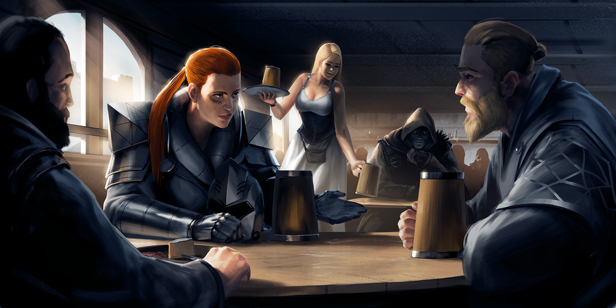
.jpg)
Sadly, as good as the film is, the Burton-Ritt sparring sessions will always cast a tall shadow on its legacy. For The Spy Who Came in from the Cold, that culture includes much of le Carré’s thoughts about Cold-War spy tactics, Ritt’s involvement in the Hollywood blacklist and also the notorious, public fights of Richard Burton and Martin Ritt.

Endless legend espionage movie#
A former spook himself, le Carré (aka/ne David Cornwall) speaks about this topic and much more in his 40-minute Criterion-exclusive interview, as well as in the included BBC-TV documentary about his life and times, The Secret Center: John le Carré.Īs per usual with Criterion, the extensive special features not only highlight the movie and its accomplishments, but also all the culture that comes with it. If it sounds convoluted, it’s because it is spies often resort to various levels of self-reflexivity to provide cover. As different layers of the plot reveal themselves – who is indeed duping whom - Leamas becomes increasing embittered with an already bitter business. It was hoped Leamas would provide enough doubt to Muntz’s credibility that his own organization would oust him. After watching Riemas’ murder, when the camera settles on Leamas’ sunken-in, weary eyes, the tragic realism of the film is secured and Burton begins his powerhouse of a performance.Īfter Leamas’ failed trials in Berlin, the disheartened agent is given a new assignment: to act as a traitor and provide false intelligence to the East Germans implicating one of their higher-ups (Peter van Eyck as Hans-Dieter Muntz) as a double-agent for the British. There are no extraordinary gadgets, given by Q, or Alexander Waverly, that miraculous save your life – just a rickety bicycle, your inadequate wits and a government who cares nothing about you. In the film Ritt uses demoralization and disillusionment as currency. And even though James Bond had been tearing up the British box offices and bookstores, this humorless adaptation of John le Carré’s 1963 gritty, spy noir received much critical acclaim (including 1965 BAFTA wins for Burton and Witt), with kudos falling largely on le Carré’s great source material, Oswald Morris’ stellar black-and-white cinematography, Burton’s broad, lumbering shoulders and Martin Ritt’s ability to deal with Burton’s enormous amount of lumber. This last-ditch effort proves futile, and Leamas can do nothing but look on in horror as his last agent is murdered before his eyes.Īnd it’s that small moment – the image of Riemack collapsing from his bicycle – which sets this film apart from the silliness of 007 (and all the other fantasy spy romps) and claims the somber tone of the film. Just as it seems Riemack made it through the gates, the alarms and spotlights switch on, and Riemack ungracefully climbs onto his bike, trying to outrun the incoming gunfire. But there’s a certain image in the stellar opening scene of Martin Ritt’s The Spy Who Came in from the Cold that speaks directly to that “spy craze”, and how off-the-mark it really was.Īs British double-agent, Karl Riemack, tries to coerce his way back into West Berlin with false papers in his hand and a bicycle by his side, fellow spook, Alec Leamas (Richard Burton) waits safely across the border, silently rooting for his cohort. And that’s one thing those ’60s sexy espionage movies left out.


 0 kommentar(er)
0 kommentar(er)
